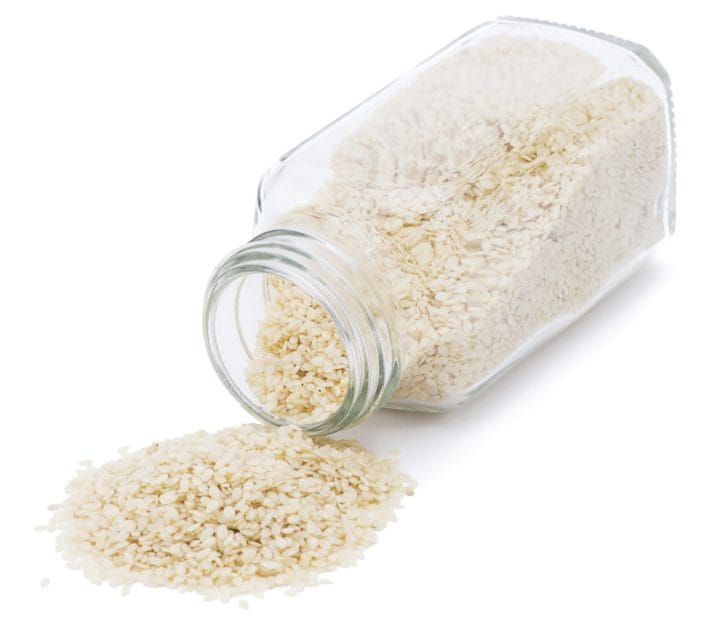 Photo: Getty
Photo: Getty The drug watchdog reviewed Aimmune Therapeutics’ AR101 oral immunotherapy and DBV Technologies’ Viaskin Peanut patch. ICER’s report, released July 10, 2019, finds “uncertainty” in the benefits of desensitization in general, and criticizes the availability of long-term life improvement data on the two products, as well as the rate of adverse reactions in clinical trials.
The report speaks of “the need for improved data to demonstrate that desensitization is linked to improved quality of life and reduced reactions to accidental exposure to peanuts.”
FARE, the largest food allergy non-profit, expressed “deep concerns” about the report’s conclusions, saying that ICER did not give sufficient weight to the perspectives of patients, who have been waiting for years for food allergy treatments to emerge.
Patients Lose Patience
“Avoidance, epinephrine and emergency room visits can no longer be the norm for the more than 32 million Americans living with food allergies today,” Lisa Gable, FARE’s CEO, said in a statement. “Our community needs choices.”
In a news release, Aimmune called ICER’s final report “biased against immunotherapy, generally.” The company says that back in May 2019, it gave the ICER panel new data from its Phase 3 trials. These showed significant improvement in quality of life among those being treated with AR101 as well as quantifying anxiety among those with peanut allergy still practicing avoidance. Yet these data were not incorporated into the final report.
Aimmune agreed with food allergy advocates who are asking insurers and policymakers “to engage in more thoughtful, unbiased consideration of available evidence – including patient perspectives on quality-of-life improvements and relief from the stress and fear of accidental exposure – when evaluating emerging treatments for peanut allergy.”
Gable found it “troubling that ICER did not give appropriate weight to the perspective of patients with the most on the line when it comes to food allergy treatments.”
Private practice OIT, in which allergists use gradually increasing amounts of peanut flour in desensitization, had originally been included in the assessment, but ICER dropped it from the process. It cited a lack of quality studies and standardized practice methods, and differences among the peanut products used.
Will Report Have Impact?
ICER’s report comes at a pivotal point for the two therapies it assessed. Aimmune’s AR101 biologics license application will be reviewed by the FDA in September 2019, with an eye to potential approval for early 2020. DBV Technologies, meantime, is planning to resubmit an application for approval. So will ICER’s lukewarm appraisal have an effect on the FDA process?
Financial data analysts Zacks Investment Research said that “although the ICER is not related to the FDA, its report may have an impact on the latter’s decision.” FARE expressed concern that the report “could negatively impact the accessibility of these treatments, which represent the most significant developments in the quest to find new treatments … for life-threatening food allergies.”
FARE is pledging to work directly with the food allergy community “to ensure their voices are heard and they have affordable access to these products when they enter the marketplace.”
The nonprofit Asthma and Allergy Foundation of America (AAFA) had a more optimistic response, saying the ICER evaluation “does not impact an approval nor denial from the Food and Drug Administration.”
“ICER’s review of these therapies was too early in the process,” said Kenneth Mendez, AAFA’s CEO and president. “Safety and long-term efficacy concerns should be addressed through the FDA review process. If promising treatments are approved by the FDA, then as with any treatment, patients and their health-care providers should decide which treatment is appropriate.”
ICER’s report acknowledges the success rate of Aimmune’s OIT product, which found over 67 percent of participants on treatment could 600 milligrams of AR101 powder mixed into food – the equivalent of about two peanut kernels. However, it spends much time on the 14 percent of participants on therapy who had reactions requiring epinephrine in the key trial. (Only one reaction in the trial was graded as severe.)
With the Viaskin patch, adverse reactions were fewer, but ICER criticized the fact that 9 percent of participants on treatment needed epinephrine (vs. 3.4 percent on placebo) and the therapy success rate was lower.
Costs and Realities
The ICER report spends much time on cost-benefit analysis, though it acknowledges prices haven’t been established. When ICER released its evidence report a month earlier, manufacturers and patient groups uniformly called the review as a whole premature, but especially the cost evaluation.
While desensitization can significantly reduce a patient’s risk of allergic reactions from accidental allergen exposures, it is not meant to be a cure. ICER, however, expresses concern about the regular dosing required for immunotherapies, saying “this raises issues about long-term adherence.” But it only briefly acknowledged the quality of life issues that families live with daily in the effort to manage a food allergy.
“Unfortunately, ICER did not truly consider the realities food allergy families face every day, and when it comes to assessing the value of these treatments to the community they are intended to benefit, ICER’s report fell short,” said Nurry Hong, FARE’s chief of strategy and innovation, who was among those presenting at an ICER stakeholders’ meeting in June.
Related: Severe food allergy reactions surge over decade: study





